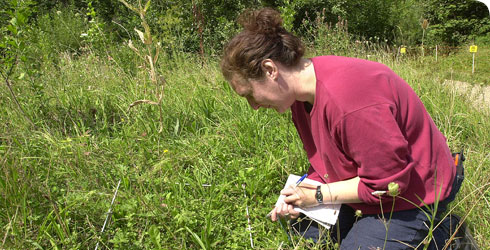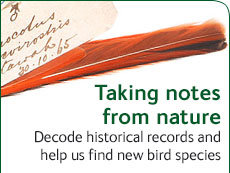Get involved
To help with scientific research you don't have to work in a lab. Just visit your garden, local wood or the seashore and you can take part in a national survey, like the Museum’s bluebell survey or the Big Seaweed Search.
Your results will help scientists to find out more about UK species and their distribution, so they can be conserved for future generations.
-

Big Seaweed Search
Take a walk along the coast and help us monitor the effects of climate change and invasive species on the UK's seaweeds.
-

Urban tree survey
Help us learn more about the diversity and distribution of trees growing in urban areas by telling us about the trees in your streets, parks and gardens.
-

Bluebell survey
Are bluebells flowering earlier than they used to? Help us find out by taking part in the Museum's bluebell survey.
-

The Microverse project
Collaborate with Museum scientists on cutting-edge genetic research into microorganisms that survive in extreme urban environments. For secondary schools.
-

OPAL Open Air Laboratories Network
OPAL helps people to explore, study and enjoy their local environment. Discover the surveys and regional activities on offer.
-

Other public surveys
Whether you are interested in insects, birds, reptiles or amphibians, find out how you can help the UK's experts to map the biodiversity of the UK.
Nature groups

If you run a natural history society or wildlife recording scheme, join Nature Groups Near You and attract new members.
Citizen science project guide

Scientists at the Museum's Centre for UK Biodiversity and the Biological Records Centre have produced a practical guide to setting up citizen science projects to study biodiversity and the environment.
Guide to citizen science PDF (3.4 MB)

